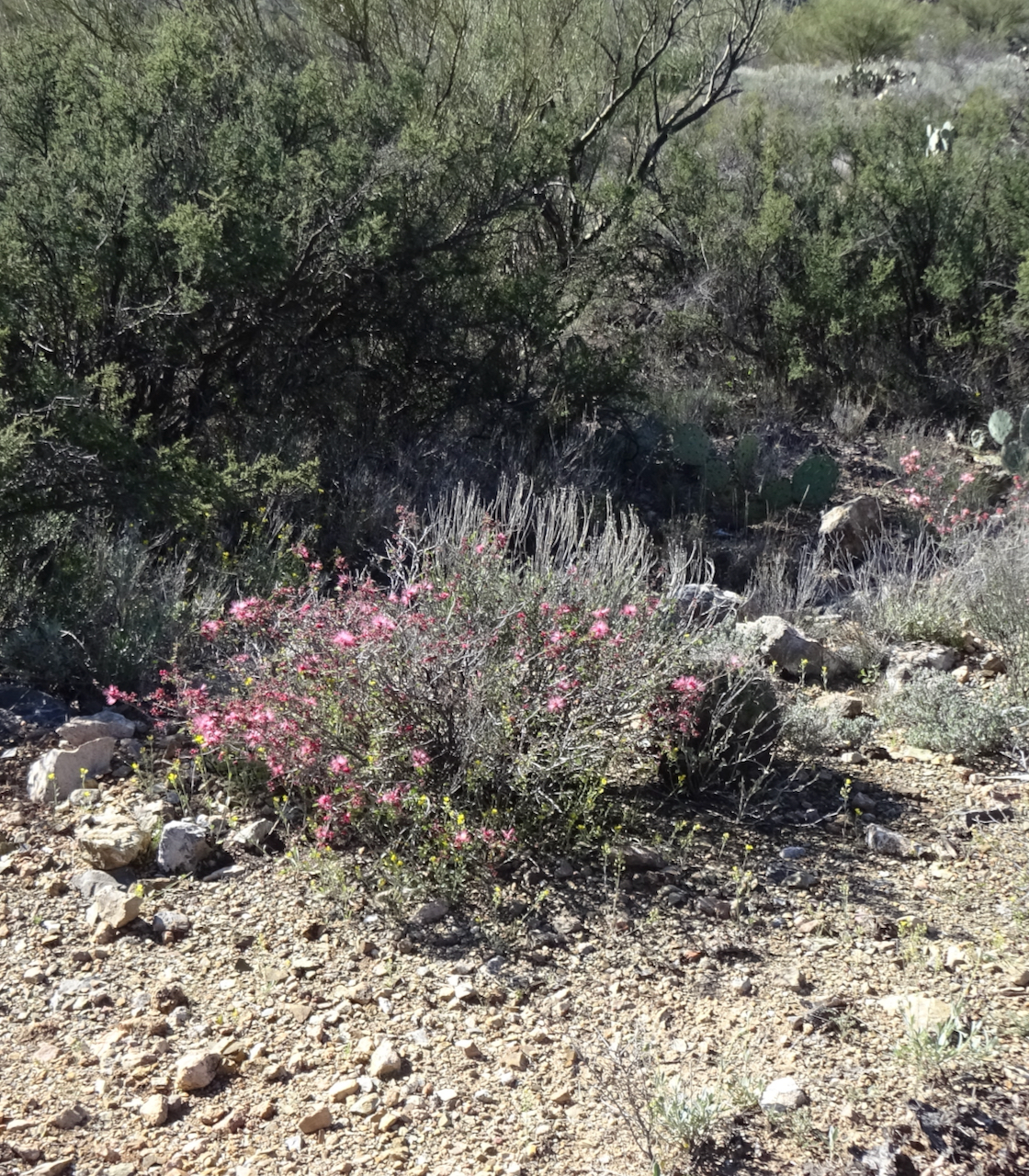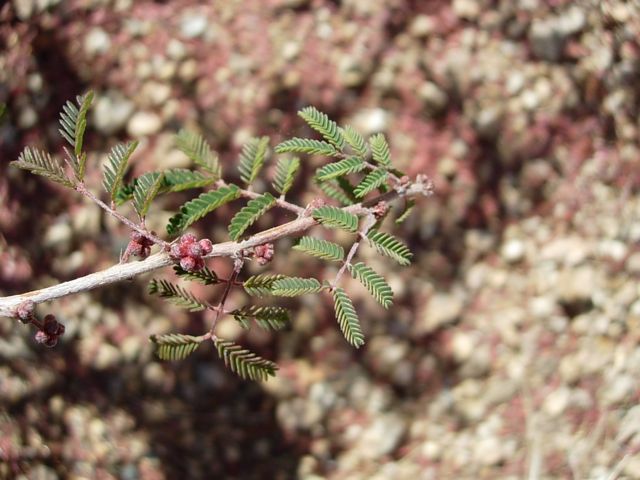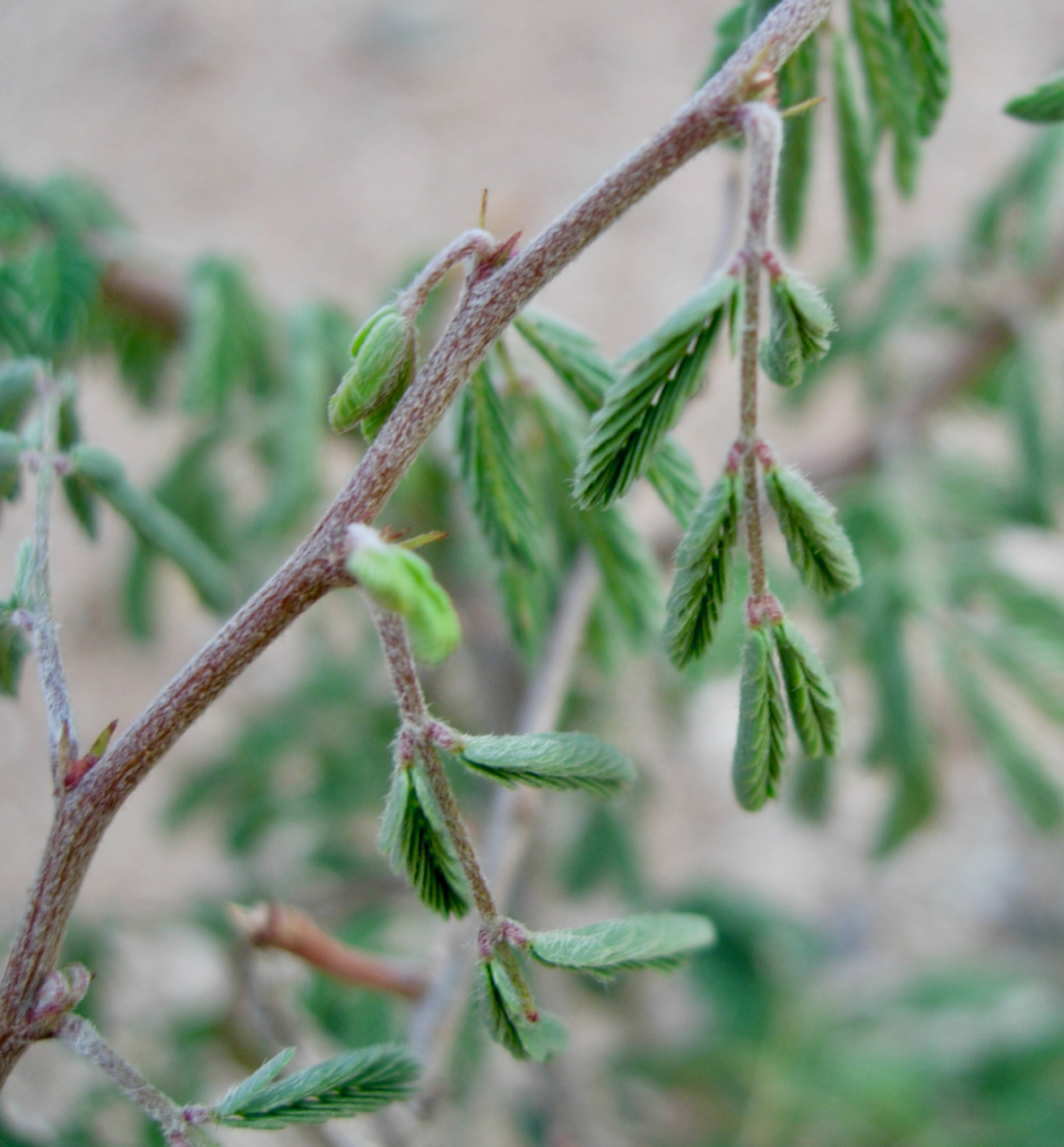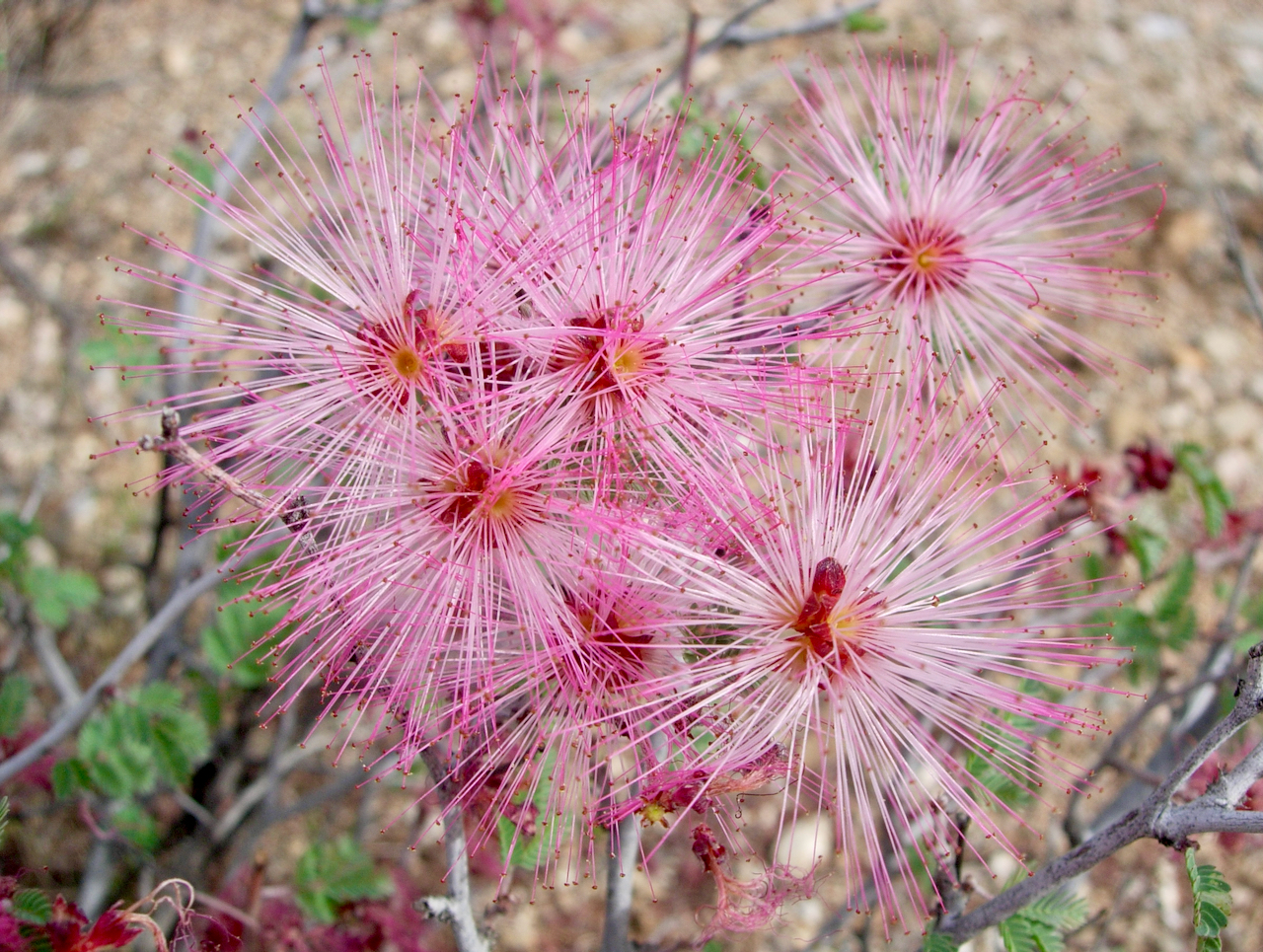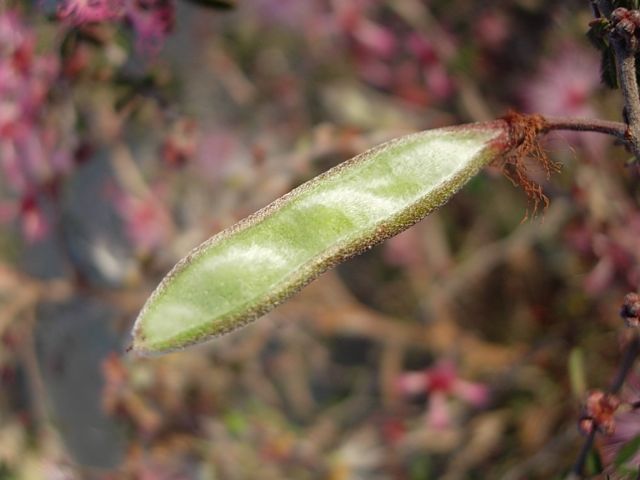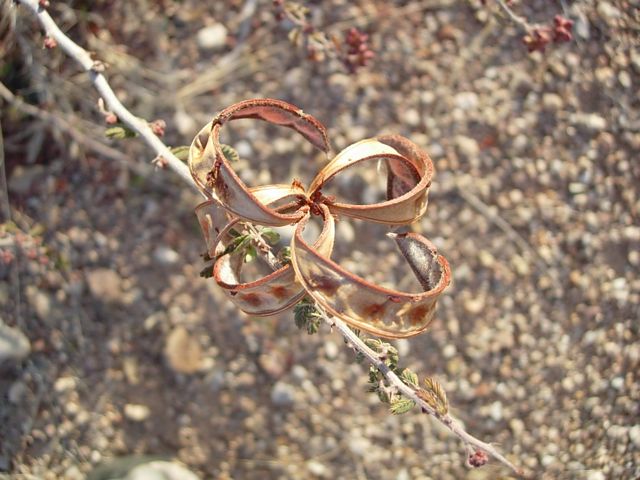Fairy Duster
Calliandra eriophylla
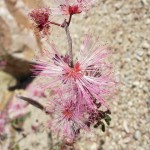
About the Plant
Take a drive or a hike in Saguaro National Park-East in March and you'll find this small shrub blooming amid the brittlebush and bush dalea. Both the pale to deep pink puff ball flowers and the small, finely-divided leaves contrast nicely with succulents and larger shrubs. This native plant blooms robustly in spring, often as the leaves are just appearing, and may rebloom in summer or fall if rainfall (or irrigation) is sufficient.
Grow fairy duster in full sun in well-drained soil. It may lose its leaves in drought and usually loses its leaves in winter in the cooler portions of the Tucson metro area. Without irrigation, the plant grows to about 2 feet by 2 feet. With irrigation, it may reach 3 feet high and just as wide. This small shrub has a lovely natural, tidy form. Give it the space it needs so you will never have to prune it. If you must prune, prune in fall.
Note: fairy duster has a dense root system and can be used for erosion control
Wildlife value: Hummingbirds, small butterflies and moths, and pollinators are attracted to the flowers. Birds and rodents eat the seeds.
More Information
Horticultural information from ASU (please note, our native fairy duster is usually not evergreen in the foothills surrounding Tucson)
Info and photos from Noelle Johnson, Horticulturist
Map of distribution in US (yellow indicates plant is native but rare)
Technical botanical description from SEINet
In books:
Native Plants for Southwestern Landscapes by Judy Mielke, page 98
Perennials for the Southwest by Mary Irish, page 110
